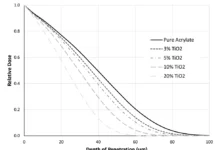by Stephen C. Lapin, Ph.D., BroadBeam Applications Specialist, PCT Engineered Systems, a division of Ebeam Technologies, Comet Group
Question: What is the range of available commercial electron beam systems?
Answer: One way to classify electron beam (EB) equipment is by the electrical potential used to accelerate the electrons. The broadest definition could include equipment operating at less than 10 kV that is used to treat materials in a vacuum and up to systems rated for 10 MV that are used to treat bulk materials in a concrete bunker. In order to keep this discussion manageable, it will be limited to low energy, self-shielded systems used to treat materials at atmospheric pressure.
The industry defines low energy as less than 300 kV. These systems generate electrons using electrically operated filaments in a vacuum chamber. The electrons are accelerated and pass through a thin titanium window foil to treat materials at atmospheric pressure. Given current window foil technology, the practical low energy end of the spectrum today is about 80 kV. As mentioned in earlier articles, this accelerating voltage determines the depth of penetration into the material to be treated – 80 kV is good for penetrating materials up to about 10 g/m2 (10 microns with a density of 1.0) and 300 kV will penetrate about 450 g/m2 (450 microns at a density of 1.0).

Another way classify electron beam equipment is by the power. The power is the product of the beam current and the accelerating voltage. For example, an 80 kV system with a beam current of 25 mA has a power of 2 kW. On the other end of spectrum, a 300 kV system with a beam current of 2 amps has a power of 600 kW. The 2 to 600 kW range covers most of the low energy systems available today. Figure 1 provides an illustration of where today’s self-shield/low energy EB systems fall in the spectrum of energy and power.

Width is yet another way to classify the range of available equipment. The vast majority of low energy EB systems are used for web processing. Web width will be considered for this discussion, but future discussions will include handling of non-web materials. The range of web widths today is greater than ever, with systems using sealed tube “ebeam lamps,” starting at 270 mm, to wide web actively pumped systems – up to about three meters wide (Figure 2). This range enables narrow-web applications, including package sterilization and digital label printing. A well-established mid-web application is curing of web offset inks for carton printing. Examples of wide-web applications include curing coatings on décor paper and high-volume flexible packaging.
System power numbers are interesting to compare, but what converters most often want to know is how fast they can run. In order to determine line speed, the power (at the desired voltage) needs to be distributed over the desired width. This is specified for the system as the throughput. The units of throughput are a product of the dose and line speed. A mix of English and metric units may be used, so ratings may be seen in Mrad·ft/min or kGy·m/min. Systems for mid-web and wide-web converting may have throughput ratings in the range of about 10,000 to 15,000 kGy·m/min. The actual speed then is determined by the dose required for the desired process. A typical dose for curing inks and coatings used for printing and packaging applications is 30 kGy (3 Mrads). A 30 kGy dose on a system rated at 12,000 kGy·m/min can run up to 400 m/min. Film cross-linking may require a higher dose. Film cross-linking at 100 kGy can run at 150 m/min on a 15,000 kGy·m/min system. These speeds are a good fit for many web converting applications.
The clear conclusion of this discussion is that the range of EB systems available today is more extensive than ever before and matches well with a large array of end-use applications.
Stephen C. Lapin, Ph.D., is a broadbeam applications specialist for PCT Engineered Systems, a division of Ebeam Technologies, Comet Group. He can be reached at sclapin@teampct.com.






